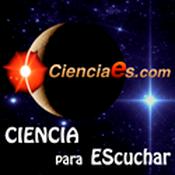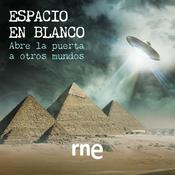46 episodios

Whales, sex, and rocks — it's our holiday book show!
19/12/2025 | 54 min
We talk to authors of some of this year’s most fascinating science books in our annual Holiday Book Show.INCLUDING: Questioning the purpose of whale song — for love or echolocation?Journeying through deep geological time to better tackle problems of the futureBiological sex is complicated but that's what helps animals like humans thriveMini reviews of: The Martians by David Baron, Dinner With King Tut by Sam Kean and The Mind Electric by Pria Anand.

How Jeremy Hansen is prepping for the moon, and more…
12/12/2025 | 54 min
Next stop - the moon! Jeremy Hansen stops by our studio to chat about how he’s prepping to be the first Canadian to go to the moon.Plus:Santa’s reindeer may be losing their antlers –– and climate change could be the culpritReindeer are the only animal in the deer family where the females also grow antlers, and they typically have a full rack over the wintertime and drop them in June when they give birth. University of Guelph PhD student Allegra Love was monitoring reindeer on Fogo Island in Newfoundland, when she made a surprising discovery that female reindeer are losing and growing their antlers much earlier than usual. This can put more stress on the animal during a crucial part of their pregnancy, and the researchers think this could eventually lead to the reindeer losing their antlers altogether. The work was published in the journal Ecosphere.Pterosaur brains reveal clues about why these mighty fliers took to the skiesFlight has only evolved among vertebrates three times — in bats, birds, and first in pterosaurs. How pterosaurs first took to the skies was always a mystery to scientists, until the discovery of a fossilized 230-million year old pterosaur relative in Brazil. An international team, including Ohio University professor Lawrence Witmer, used an MRI for detailed analysis of the fossilized skull, to pinpoint the miniscule brain changes that happened as the animal developed the capacity to fly. The research was published in the journal Current Biology.Scientists are using AI to find life in 3 billion year old rocksEarth’s earliest signs of life are often incredibly difficult to detect. An international team of researchers have developed a new tool that uses AI to find “whispers” of life locked inside ancient rocks. Using this tool, the researchers, including astrobiologist Michael Wong from Carnegie Science, were able to detect fresh chemical evidence of life in rocks that are 3.3 billion years old. This tool can not only be used to explore the origins of life here on Earth, but also on Mars and other planetary bodies. The work was published in the journal PNAS.

Cleveland’s ancient car-sized sea monster had bony fangs, and more…
05/12/2025 | 54 min
Scientists are shedding light on the strange, car-sized, armoured fish that lived 360 million years ago in what is now Cleveland. Plus: The cosmic collider that gave us our moon came from our own solar system, soccer fanatics' brains are wired differently than regular fans, industrial chemicals are hurting our microbiome, and scientists are using our brains to build a better computer.

The environmental costs of nation-building, and more…
28/11/2025 | 54 min
On this week’s episode: a mini tyrannosaur is a new species, ants redesign to avoid illness, toxic lead gave humans the edge over Neanderthals, invasive fish are evolving to avoid eradication attempts, and how big mining projects — and attempts to hurry them along — can spell bad news for the environment.

The mystery of the drunken trees, and more…
21/11/2025 | 54 min
This week: bees trained to keep track of time, eating small amounts of plastic can kill ocean animals, scientists spot winds blowing from our black hole, a "one-two punch" earthquake may be coming for the Pacific coast and what “drunken trees” can tell us about our warming climate.
Más podcasts de Ciencias
Podcasts a la moda de Ciencias
Acerca de Quirks and Quarks
Escucha Quirks and Quarks, Fiebres Lúcidas y muchos más podcasts de todo el mundo con la aplicación de radio.net

Descarga la app gratuita: radio.net
- Añadir radios y podcasts a favoritos
- Transmisión por Wi-Fi y Bluetooth
- Carplay & Android Auto compatible
- Muchas otras funciones de la app
Descarga la app gratuita: radio.net
- Añadir radios y podcasts a favoritos
- Transmisión por Wi-Fi y Bluetooth
- Carplay & Android Auto compatible
- Muchas otras funciones de la app


Quirks and Quarks
Descarga la app,
Escucha.




























